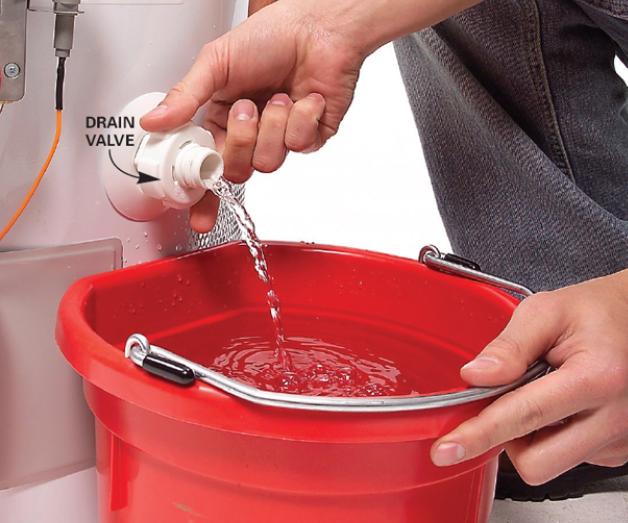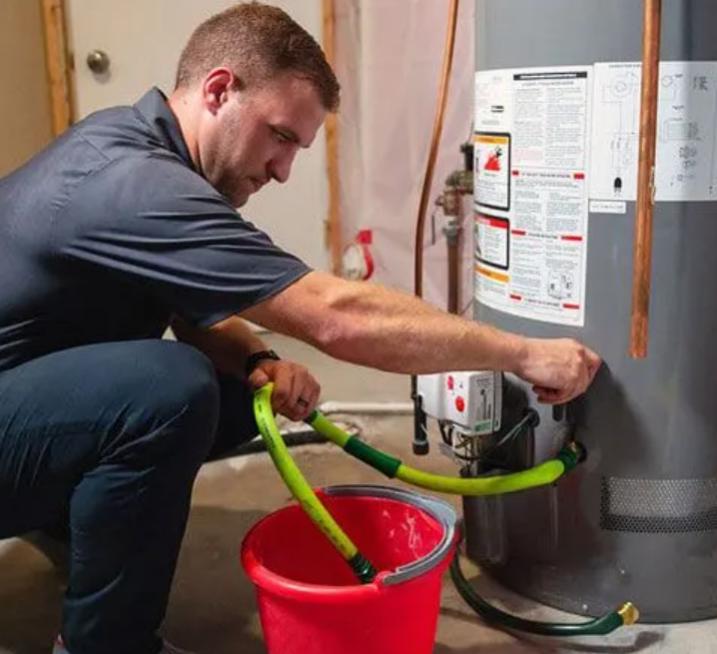Draining your water heater is a crucial maintenance task that can significantly extend its lifespan and improve its efficiency. Over time, sediment and mineral deposits build up at the bottom of the tank, reducing the heater’s performance and increasing energy costs. By learning how to drain a water heater, you can prevent these issues and ensure your water heater operates smoothly. This guide will walk you through the reasons for draining your water heater, how often it should be done, and the exact steps to perform this essential maintenance task.

Why Should You Drain Your Water Heater?
Prevent Sediment Build-Up
Sediment build-up is a common issue in water heaters. Minerals from hard water settle at the bottom of the tank, forming a thick layer of sediment. This layer can insulate the water from the heating element, causing the heater to work harder and use more energy. By draining the water heater regularly, you can remove this sediment, allowing the heater to operate more efficiently and reduce energy consumption.
Improve Efficiency
A water heater full of sediment cannot heat water as efficiently as a clean one. The sediment acts as a barrier between the heating element and the water, leading to longer heating times and higher energy bills. Draining the water heater removes this barrier, allowing for faster heating and more consistent water temperatures. This simple maintenance step can save you money and ensure your water heater performs at its best.
Extend Lifespan
Regularly draining your water heater can also extend its lifespan. Sediment build-up can cause the tank to overheat, leading to premature wear and tear. This can result in leaks, corrosion, and even complete failure of the heater. By draining the water heater and removing sediment, you reduce the stress on the tank and its components, helping to prolong its operational life and avoid costly replacements.
How Often Should You Drain Your Water Heater?
Manufacturer Recommendations
Most water heater manufacturers recommend draining the tank at least once a year. However, the exact frequency can vary based on the model and the quality of your water. Consult your water heater’s manual for specific guidelines, as following the manufacturer’s recommendations will help maintain your warranty and ensure optimal performance.
Signs It’s Time to Drain
In addition to annual maintenance, you should also be aware of signs indicating it’s time to drain your water heater. These signs include fluctuating water temperatures, reduced hot water supply, and strange noises coming from the tank. If you notice any of these symptoms, it’s a good idea to drain the water heater to check for sediment build-up and restore its efficiency.
Factors Affecting Frequency
Several factors can affect how often you need to drain your water heater. The hardness of your water plays a significant role; harder water means more minerals and sediment build-up. If you have a water softener, you might need to drain the tank less frequently. Additionally, the age of the water heater can influence maintenance needs. Older units may require more frequent draining to keep them running efficiently.
Step-by-Step Guide on How to Drain a Water Heater
Tools You Need
To drain your water heater, gather the following tools: a garden hose, a bucket, a wrench, and a screwdriver. These tools will help you safely and effectively drain the tank. Ensure you have the necessary safety gear, such as gloves and protective eyewear, to avoid any accidents during the process.
Safety Precautions
Before you start draining your water heater, take some safety precautions. Turn off the power supply to the heater; if it’s electric, switch off the circuit breaker, and if it’s gas, turn the gas valve to the “pilot” position. Next, shut off the cold water supply to the tank. Allow the water to cool for a few hours to prevent burns. These steps will ensure your safety while performing the maintenance task.
Draining Process
Attach the garden hose to the drain valve located at the bottom of the water heater. Place the other end of the hose in a bucket or a suitable drainage area. Open the drain valve and allow the water to flow out. Once the tank is empty, turn on the cold water supply briefly to flush out any remaining sediment. Close the drain valve, remove the hose, and restore power or gas supply to the heater. This process will ensure your water heater is free of sediment and operating efficiently.

Common Mistakes to Avoid When Draining a Water Heater
Not Turning Off the Power/Water Supply
One of the most common mistakes is failing to turn off the power or water supply before draining the heater. This can result in severe burns or electrical shocks. Always ensure the power is off and the water supply is shut off before starting the process. This simple step can prevent accidents and ensure a safe maintenance procedure.
Incomplete Draining
Another mistake is not fully draining the water heater. Leaving water and sediment in the tank can defeat the purpose of the maintenance task. Make sure to drain the tank completely and flush it out to remove all sediment. This thorough approach will ensure your water heater remains efficient and free from build-up.
Ignoring Regular Maintenance
Regular maintenance is key to the longevity and efficiency of your water heater. Ignoring annual draining and other maintenance tasks can lead to severe issues like leaks, corrosion, and heater failure. Set a reminder to drain your water heater annually and perform other recommended maintenance to keep it in top condition.
Conclusion
Learning how to drain a water heater is essential for maintaining its efficiency and extending its lifespan. Regular maintenance can prevent sediment build-up, improve performance, and save on energy costs. By following the steps outlined in this guide, you can ensure your water heater operates smoothly and avoid costly repairs. Remember to perform this task annually and pay attention to signs indicating the need for maintenance. Taking these steps will help you enjoy reliable hot water for years to come.
FAQ
1. How often should I drain my water heater?
– It’s recommended to drain your water heater at least once a year. Check your manufacturer’s guidelines for specific recommendations.
2. What are the benefits of draining my water heater regularly?
– Draining your water heater removes sediment build-up, improves efficiency, and extends the lifespan of the heater.
3. Can I drain my water heater myself, or should I hire a professional?
– You can drain your water heater yourself by following the steps in this guide. However, if you’re unsure or uncomfortable, hiring a professional is always a safe option.
